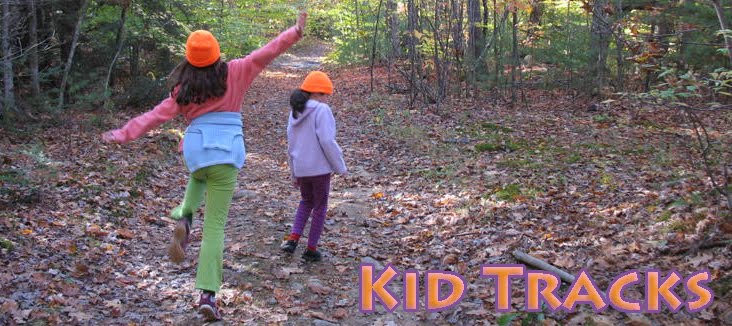DAY 1 Our first day's adventures included riding the carriage trail around Eagle Lake. It was just shy of six miles and thanks to a tip from one of the rangers, a fairly easy ride. The trick about biking around Eagle Lake is to ride with the lake to your LEFT. It's mostly downhill that way and a good introduction to the carriage trails. There were a couple of uphill climbs on this trail and since the girls were carrying extra weight on their bikes they weren't used to (we added racks to the back of their bikes for their backpacks) we got off our bikes and walked them for a bit when the peddling got hard for them. After our ride around Eagle Lake we decided to start the EarthCache program. I don't want to give away any secrets but at some point, after solving riddles and figuring out coordinates to new locations, we ended up climbing to the top of the South Bubble. Our first day to the park was a work-out but everyone left ready for more the next day.
DAY 2 Our second bike ride was supposed to be a bit more difficult ride than Eagle Lake but I took a wrong turn and it turned in to a whopper of a challenge. We started at Parkman Mountain and turned on to a trail I thought would take us to the Waterfalls Bridge. We did eventually get to that bridge but in a major round-about sort of way. We took the Around the Mountain trail to Gilmore Meadow. At that point we ate lunch and continued on the Seven Bridges trail that lead up Parkman Mountain (not to the precise summit cairn but pretty darn close). This turned out to be a serious elevation gain (about 450 feet) and not a ride I would recommend for anyone unless they were serious riders (reap the benefit of this advice from our mistake!). The girls were troopers on this trail and those long rides we've been taking around southern and central Maine this spring really helped their legs handle this particular ride. But truth be told, we did quite a bit of walking our bikes uphill with many water/snack breaks along the way. The whole trek turned out to be nearly 10 miles, which was mostly uphill, to eventually get to the Waterfall Bridge. The kids were not as impressed with the beautiful views on this trail - or the waterfall - as they would have been had we taken the shorter loop I had originally planned. And as if this is any surprise, the girls (and Fino) spent a good deal of time at the top of Parkman Mountain eating lunch and lamenting my map reading skills (which normally are pretty good). Ooops. Since we had hiked a couple of miles around the Otter Cliffs trail on Gorham Mountain *before* we undertook this bike ride, my crew was seriously tired. But everyone seemed to forgive my poor navigation skills once they ordered big sundaes at the Dairy Bar before heading back to our cottage. Oh, and we did manage to complete the EarthCache program and report back to the ranger’s station with the answer to the final riddle before we left the park that night. I must fess up however that one of the riddles required some serious thinking and a math calculation that I‘m embarrassed to say took Fino and I more than a few minutes to figure out. We were tired. That must have been the reason for our lack of problem solving skills. Yeah, that was reason. An upside to our long day, at least in my opinion, was that coaxing my crew to shut off the cable TV (a highlight of the trip since we don’t have it at home) was minimal.
DAY 3 The kids and Fino said they needed a break from bike riding on our last day so we decided to hike to the top of Gorham Mountain. We enjoyed the trail but with a 500-foot elevation gain to the summit and then another bit of climbing to The Bowl, we opted to hike the Beehive Trail for a only a short time before heading back down the Bowl trail to Ocean Drive. We agreed this wasn’t the trip to hike the Beehive (rated "difficult" by the park service because of exposed ledges and cliffs with a warning on the map's description, "adults with a fear of heights should stick to the Bowl Trail"). Next time we decided. We needed a little more energy to tackle that one. If you’ve never been to Acadia, you really are missing out on a wonderful, relatively inexpensive family vacation. We stayed in a small cabin with an efficiency kitchen for about $70/night (that’s a spring rate, prices go up in July and August) and ate out only one night (which also included an ice cream stop) thanks to the food we brought from home. The park fee was $10 for the week and other than gas, we had no other expenses. The memories of this trip - the good, the silly and the navigationally challenged - will likely be shared with much animation by the girls to anyone who will listen. That will have been worth every penny spent ... ... and then some.
